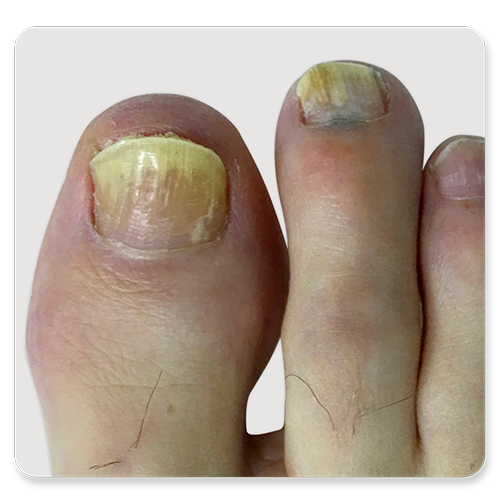
Please wait...

Please wait...
Fungal toenails, or ‘Onychomycosis’, is a fungal infection of the nail plate and is a very common issue treated here at Dubai Podiatry Centre. For some, it is mostly a cosmetic concern, though poses a more serious concern for those with certain medical conditions, such as diabetes, immunosuppressive and vascular conditions.
This is a very common nail problem in the UAE partly because of:

Perhaps you’ve been diagnosed with a fungal nail infection, or think you show signs of it? The next step is treatment and preventing it from returning. At Dubai Podiatry Centre, we closely examine your nails to identify the cause of the infection and discuss preventing it from coming back in the future. Fungal nail spores can be quite resilient and live in your socks and shoes, so treatment will involve advice on overall foot hygiene and footwear.
Treatment will depend on how much of your nail and even nail bed is infected. We often have new patients coming to see us as they have tried lots of other remedies such as foot soaks and topical nail lacquers with no unfortunately improvement. We love ‘difficult’ cases and specialize in nail and foot ailments that are complex or stubborn.








Send us a message on our WhatsApp for appointments and other queries.
WhatsApp : +971 50 355 3024 | Call: +971 4 343 5390
For fungal toenails there are a few treatment options – but which is the best for you? We asked Chief Podiatrist Michelle Champlin of Dubai Podiatry Centre to explain in simple terms the latest treatments – you can also find out more about the signs of fungal toenails.
• Another effective, fast and immediate treatment is total nail removal, useful if the nail is badly misshapen (including curved or painful ingrowing nails), or if the fungal infection is down into the nail root.
• An alternative option to treat some types of toenail infection is with an oral anti fungal (such as Lamisil tablets), although usually this needs to be taken for 6-9 months and will require an initial and ongoing liver function tests.
• Another way to treat minor superficial fungal nail infection is to use a topical antifungal nail lacquer, such as Curanail. This works nicely on superficial nail fungal infections that can be brought on by covering your toenails excessively with toenail polish or from wearing shoes and socks for a long time during the day, allowing moisture to build up on the top nail plate. This option requires longer term, usually weekly home application with follow up from your Podiatrist to ensure the treatment has resolved the infection fully.
Good nail and foot hygiene and health is vital. A healthy, natural nail is a natural shield against fungus. Some good tips to remember include to: